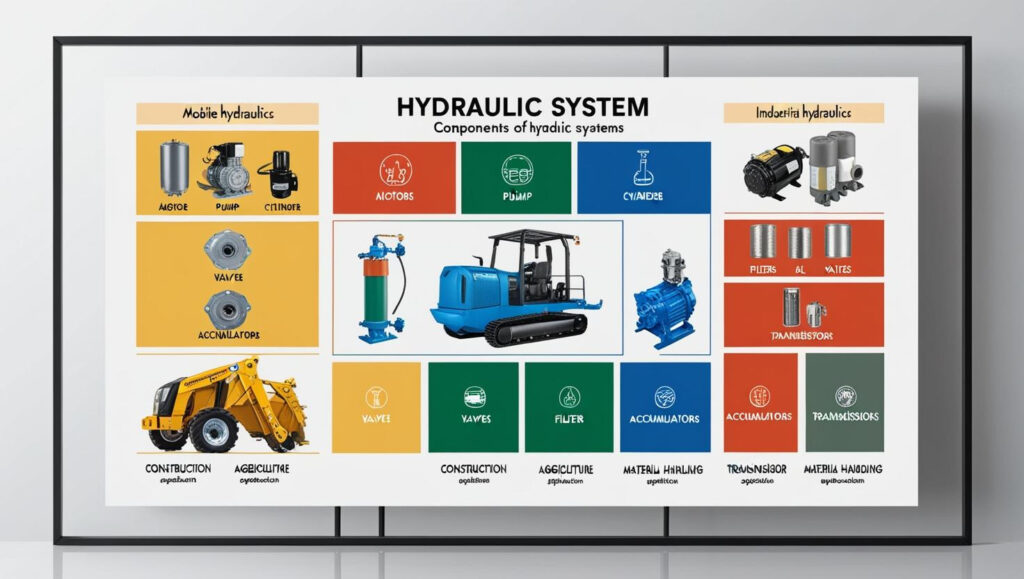The hydraulics market is undergoing a transformation as industries adopt innovative technologies to enhance efficiency, sustainability, and performance. With applications spanning across construction, manufacturing, aerospace, and automotive sectors, hydraulics remains a critical component of modern industrial operations. As advancements in automation, digitalization, and energy efficiency continue to emerge, the future of the hydraulics market looks promising. This article explores the key innovations shaping the industry and the factors driving its growth.
Download PDF Brochure @ https://www.marketsandmarkets.com/pdfdownloadNew.asp?id=209607944

Key Innovations Shaping the Hydraulics Market
1. Smart and IoT-Enabled Hydraulics
The integration of the Internet of Things (IoT) into hydraulic systems is revolutionizing industrial processes. IoT-enabled sensors and real-time data analytics are allowing businesses to monitor system performance, predict maintenance needs, and minimize downtime. Smart hydraulic components improve efficiency, reduce energy consumption, and enhance overall productivity.
2. Electro-Hydraulic Systems
Electro-hydraulic systems, which combine hydraulic power with electronic control, are gaining traction in industries requiring precision and automation. These systems offer enhanced control, reduced energy consumption, and improved responsiveness compared to traditional hydraulic systems. The growing adoption of electro-hydraulics in robotics, construction machinery, and automated production lines is expected to drive market expansion.
3. Energy-Efficient and Eco-Friendly Solutions
Sustainability is becoming a major focus in the hydraulics industry. Innovations such as biodegradable hydraulic fluids, energy-efficient pumps, and regenerative hydraulic systems are reducing the environmental impact of hydraulic operations. Companies are investing in green technologies to comply with stringent regulations and meet the rising demand for sustainable industrial solutions.
4. 3D Printing in Hydraulic Component Manufacturing
The use of additive manufacturing, or 3D printing, is transforming the production of hydraulic components. 3D printing allows for rapid prototyping, lightweight designs, and customization of parts, leading to reduced production costs and improved supply chain efficiency. This innovation is particularly beneficial in aerospace and automotive applications, where precision and durability are critical.
5. Hydraulic Hybrid Systems
Hydraulic hybrid technology is emerging as a game-changer in the automotive and material handling industries. These systems store and reuse energy, improving fuel efficiency and reducing emissions. Hydraulic hybrid vehicles and industrial machinery equipped with energy-recovery mechanisms are gaining attention as industries seek cost-effective and environmentally friendly alternatives.
Factors Driving Market Growth
1. Increased Demand for Automation
The push for automation across industries is fueling the demand for advanced hydraulic systems. Automated manufacturing facilities, robotic systems, and smart machinery rely on hydraulics for precise movement and control, making the technology indispensable for modern industrial operations.
2. Growth in Construction and Infrastructure Development
The expansion of urban infrastructure projects and increasing investment in smart cities are boosting the demand for hydraulic-powered construction equipment. Excavators, cranes, and loaders equipped with advanced hydraulic systems are playing a crucial role in large-scale development projects worldwide.
3. Expansion of Renewable Energy Applications
Hydraulic systems are finding applications in renewable energy sectors, such as wind turbines and hydroelectric power plants. The growing focus on clean energy solutions is driving the adoption of hydraulics in power generation and energy storage applications.
4. Adoption of Predictive Maintenance Technologies
Predictive maintenance is becoming a key trend in the hydraulics industry, helping companies reduce downtime and extend the lifespan of equipment. By utilizing AI-powered analytics and IoT sensors, businesses can detect potential failures before they occur, ensuring seamless operations and cost savings.
Future Outlook
The future of the hydraulics market is set to be driven by continuous technological advancements, sustainability efforts, and increasing automation. Companies investing in smart hydraulics, energy-efficient solutions, and digitalization will lead the industry’s growth. With expanding applications in various sectors and a strong push toward environmentally responsible practices, the hydraulics market is poised for significant expansion in the coming years.
Innovation is shaping the future of the hydraulics market, bringing smarter, more efficient, and sustainable solutions to industries worldwide. As businesses embrace advanced technologies and automation, hydraulic systems will continue to play a crucial role in industrial development. By adapting to changing market demands and leveraging cutting-edge innovations, the hydraulics industry is set to experience long-term growth and transformation.